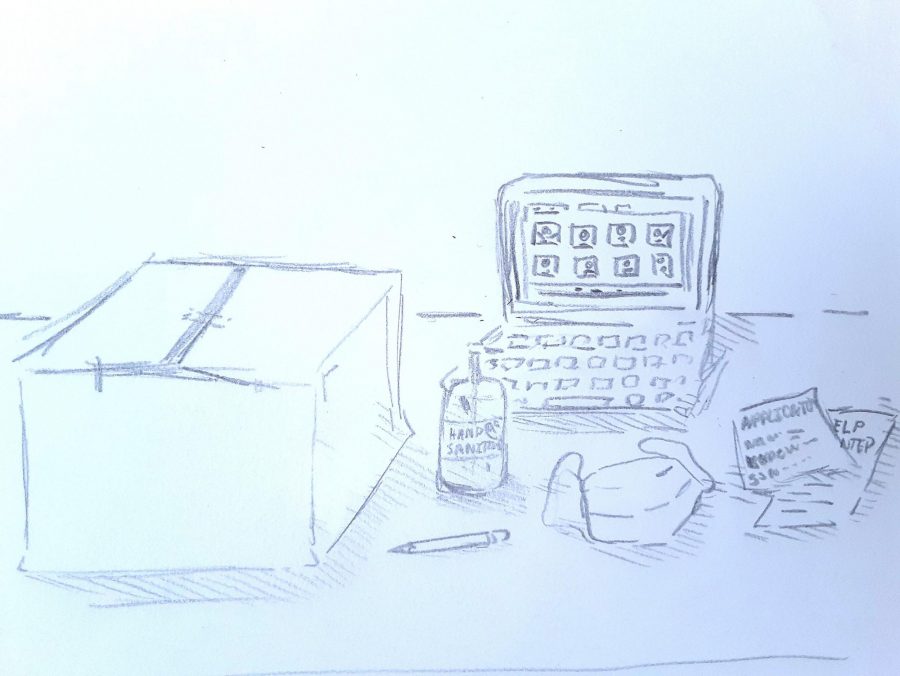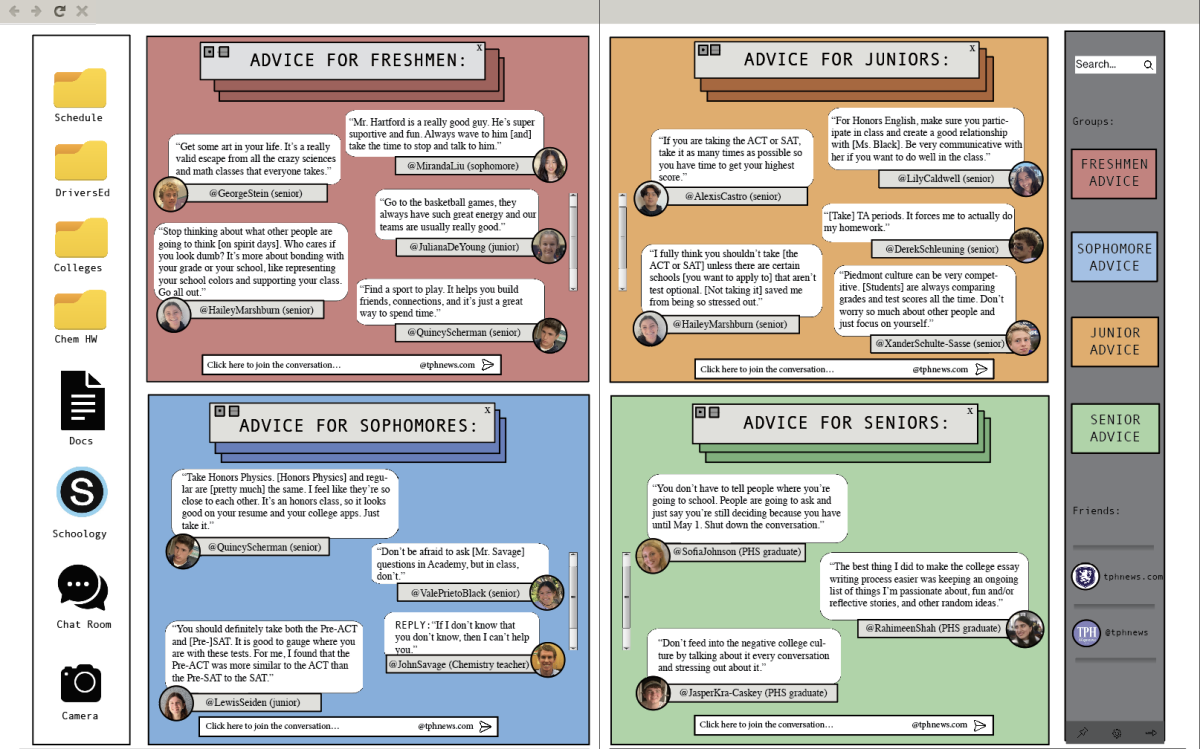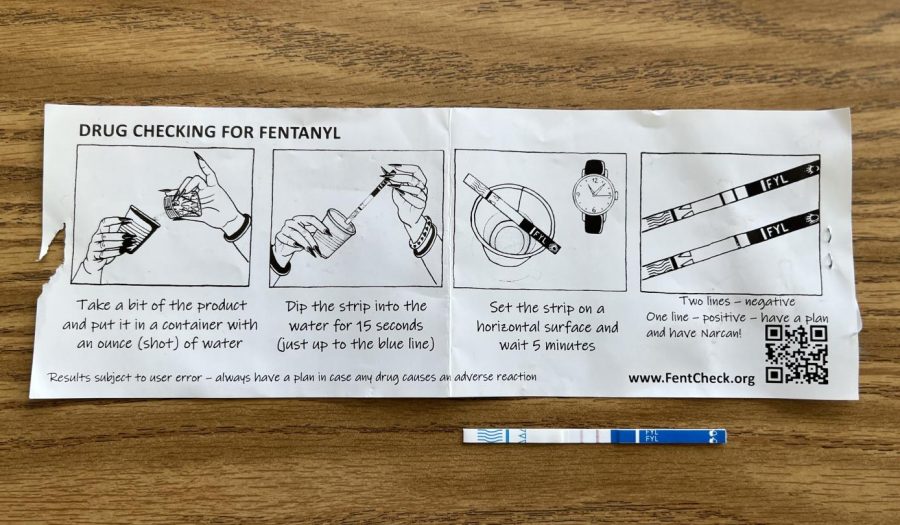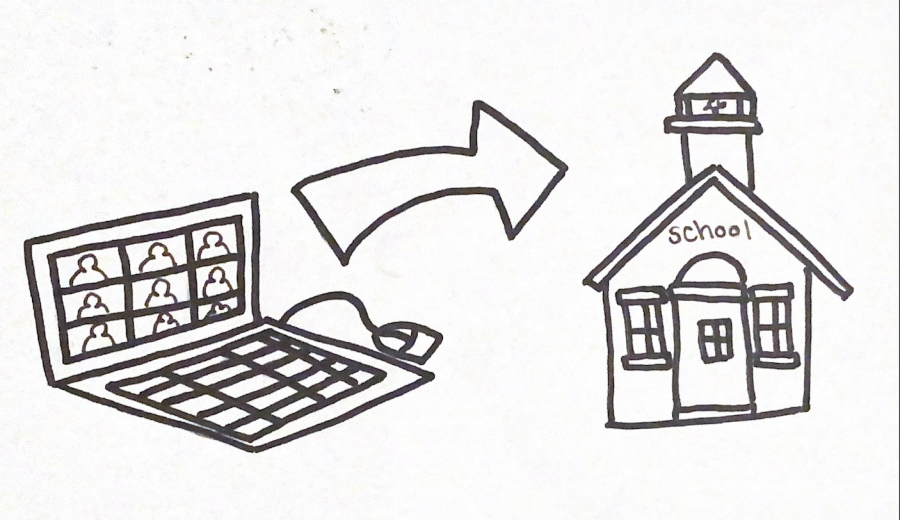Randomly generated names (Sandie, Mona, and Todd) were used in place of students’ actual names in order to maintain anonymity.
how to cope
ǝʌᴉʌɹns oʇ ʍoɥ
At age four, students learn to brush their teeth. At age seven, they learn the importance of exercise. By high school, endless supplies of information on staying physically healthy hang within the reach of a quick Google search. However, society often pushes mental health to the sidelines, forgetting health comes in two parts: physical and emotional.
Two juniors, Sandie and Mona, said maintaining good psychological well-being was a top priority.
“Mental health is just as important as physical health,” Sandie said, having experienced both anxiety and depression.
Even so, where going to the gym is a badge most people wear with honor, going to therapy is rarely discussed. This phenomenon doesn’t make sense, since mental illness affects approximately one in every five adults, according to a study by the National Institute of Mental Health.
Having honest and open discussions about mental health reduces the stigmas and empowers others, both Sandie and Mona said. They felt that having good conversations about mental health was enriching and helpful, but they also said that they did not regularly have these conversations
“The friend group that I’m in right now doesn’t talk about mental health a lot, and I don’t think that’s a bad thing,” Mona said.
In addition, Wellness Center therapist Matt Miller said that maintaining boundaries during these conversations creates a safer environment.
“You have to be careful not to take on too much or put too much onto somebody else because that weighs them down,” Miller said. “For those bigger issues, that’s where adults come in, who have more experience holding that and dealing with it.”
Conversations about mental health are like going for a light jog alone, while therapy is more like taking a pilates class. The therapist is there to guide you, and movements are more deliberate. Using therapy as a tool to cope with mental illness can be powerful, and both Sandie and Mona cited it as a helpful activity.
“I used to go to therapy,” Sandie said. “It taught me a lot of useful skills for coping [with anxiety and depression] as well as other things.”
All students have the opportunity to engage in talk therapy at the Wellness Center, something that can be beneficial for everyone, not just those with mental illnesses, Miller said.
“Maybe it’s not every week, but every once in awhile works too. Just mind dumping, dropping everything out to take a mental deep breath, can really help,” Miller said. “Students come down [to the Wellness Center] to talk about whatever with somebody who’s non judgemental and neutral.”
Much like how exercise is universally beneficial, therapy holds the same value, and for Mona, she said that structure and support are also critical parts of her mental health routine.
“For me, I know that I need to take time out of my day to check in with myself and check in with how I’m doing mentally,” said Mona. “I know that I go to therapy every week and I take medication every day.”
Miller said that medication is not useful for everybody, but for Mona, taking medication has helped her cope with her bipolar disorder.
“Medication is a mood stabilizer, which just makes me experience mood swings with less intensity,” Mona said. “It doesn’t mean that I don’t have mood swings, but it means that my depressive mood swings don’t stop me from leaving the house and my manic mood swings don’t lead me to doing life threatening things.”
On the other hand, Sandie uses socialization and self care as a critical part of her mental health routine.
“I try to destress a lot in different ways like hanging out with my friends, being with my dogs, drawing, or journaling, and, of course, exercise,” said Sandie.
Miller said exercise can facilitate maintaining good mental health.
“Cardio exercise is like the natural drug for all of us to boost our mental health,” Miller said.
However, he also said that just doing anything can be beneficial.
“Whether it’s just going outside and walking around, playing a sport, or doing an art-based thing, activities just get your mind off of your mind,” Miller said.
when it’s stress
ǝɹoɯ s,ʇᴉ uǝɥʍ
I am so stressed. I have no time for that. I was up all night studying.
“Everyone has stress,” said clinical supervisor of the Wellness Center Alisa Crovetti.
Some students stress about grades or a big game or their outfit, but everyone gets stressed about one thing or another. How to handle that stress is the difference between it becoming a larger health concern.
“Stress is a pretty normal experience for people to have,” Crovetti said. “Only when that stress escalates to a certain level do we start thinking about a real mental health problem.”
There are many differences between when one is experiencing stress and when one experiences a mental health issue, Crovetti said.
Teens report that their stress level during the school year far exceeds what is believed to be healthy, 5.8 compared to 3.9 on a 10 point scale, according to a survey by the American Psychological Association. This stress leads many teens to feel overwhelmed, depressed, and tired.
“Stress, just on its own, at a mild to moderate level, can be pretty normal” Crovetti said. “As long as people have ways to cope with it and that its not constant, stress is not a bad thing.”
“It is only a mental health issue when it’s significantly interfering with someone’s ability to function in life,” Crovetti said. “Some signs that the stress is becoming too much are having trouble falling or staying asleep, eating too much or not enough, difficulty concentrating, and feeling that they can never relax.”
“Once a student begins seeing these signs occur in themselves, then they should seek help,” Crovetti said.
While it’s easy to write in a text or tell a friend in the hallway about one’s stress, Person said that many students do not know how to talk about the stress they experience.
“I know for me, and for some of my friends who also have stress, we do not like to talk about it,” junior Todd said. “Students just don’t feel comfortable talking about it.”
Transition- Wellness center and school counselors are available for students.
For the students who do talk to the advisors at the Wellness Center about their stress, the causes of the stress are all very similar, Crovetti said.
“More than half of the students who come to the Wellness Center are having an issue with school related stress or anxiety,” Crovetti said.
However, many students think about stress as their own personal problem, and feel they need to handle it on their own, Todd said.
“I know the counselors are supposed to be there and the Wellness Center is supposed to be there to talk about it but I don’t feel like they’re usable resources,” Todd said.
The idea of “Piedmont Stress” hangs over a large number of students, feeling that they need to get the highest possible grade on every assignment and test, Todd said.
“I feel that there is a difference between being motivated to get good grades and the fear of getting a bad one,” Todd said.
perspective
ɐɯƃᴉʇs
One out of four people currently have a mental illness. For most, the humiliation and forced separation from society trumps the symptoms of the mental illness itself, according to Psychology Today. In a survey conducted by Time to Change, 26 percent of the young people questioned who had a mental illness felt that they wanted to give up on life because the stigma around their diagnosis is so appalling.
The definition of stigma is the shame and discrimination based around a certain trait. Stigma plays a large part in mental illness, psychiatrist Charles Saldanha said.
“If a leg is broken one can see it using an x-ray,” Saldanha said, “If someone has a tumor, one can see it using an MRI, but there is no clear way to see a mental illness.”
Therefore, the only way to know if someone has a mental health issue is if the person chooses to tell you directly, according to teenmentalhealth.org.
Everyone responds to mental illnesses differently, Saldanha said. This can make it exceptionally hard for other people to understand what a person with a mental illness is going through and what they can do to help, according to helpmentalteenhealth.org. This misunderstanding often leads to people feeling uncomfortable and then treating those with mental illness unfairly.
Another cause for the stigma around mental illnesses is social media, according to teenmentalhealth.org. Mental illness is frightening, and people often assume that those who are mentally ill are violent and crazy, Saldanha said.
“In the media, many say the solution to the gun debate is to just stop giving guns to the crazy people, but in reality the number of mentally ill people that have conducted shootings recently is incredibly low,” Saldanha said.
The most common belief of over 1700 adults in the UK about people with mental illnesses is that people with mental disorders were threatening, according to Psychology Today.
One of the most important forms of stigma to be addressed is the current widespread belief that mental illness is not real, said Saldanha.
“Many of my patients have a hard time themselves believing that they have a mental illness,” Saldanha said.
Most people think of mental health as a hyperbolized image that doesn’t reflect what the majority of people that experience these disorders, junior Sandie said.
“Often my patients miss out on opportunities because of the stigma around their diagnosis,” Saldanha said.
For example, it is much harder for people with a mental illness to find a job, Saldanha said.
“Even though employers may not be conscious of how their bias is affecting their decision, this is still a reality,” Saldanha said.
According to the National Alliance on Mental Illness, there is an 80 percent unemployment rate for people who have a mental illness.
“Most people try to distance themselves from mental illness,” Saldanha said. “They think that mental illness is not their problem because it will never happen to them. But in reality, 20 percent of people will experience mental illness at one point in their life.”
Therapy dog handler Debbie Reid and her rottweiler, Ruby, are registered with the Alliance of Therapy Dogs or ATD, Reid said. They have worked in hospitals, schools, and nursing homes.
“Most people don’t want to be around people with mental illness,” Reid said. “They don’t know how to react. They shy away from it. But Ruby doesn’t care, she loves everybody.”
Part of what makes Ruby so appealing to people, especially those with mental illnesses is that she comes without the burden of judgment, Reid said.
“[Mental illness] is not something you can experience with other people,” Sandie said. “There is no way that it can be a group experience and as soon as people try to think of it in that way, you’ve crossed into romanticization.”
The solution is that mental health should be an experience that is very private and personal, Sandie said.
“Most of the time, and I understand that some people want to keep their personal information private, but just showing support and acceptance can tremendously help the recovery of someone who has a mental illness,” Saldanha said.
Education and experience are the key to stopping this stigma around mental illnesses, Reid said.









































